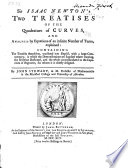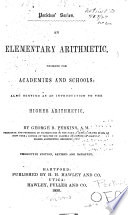 | Robert Shirtcliffe - Gaging - 1740 - 322 pages
...:18770: : : :: 270544: 6525:: 26278:: ::: 541088:: 73,4715 ,2830516 ,00057490600 Coral. Whence the Number of decimal Places in the Product, is equal to the Sum of decimal Places in the Factors. When the Multiplicand and Multiplier together contain more Decimals... | |
 | Isaac Newton - Calculus - 1745 - 524 pages
...muft at leaft be as great as the Sum of thofe prefixt in both Factors. For, by the laft, the Number of Decimal Places in the Product, is equal to the Sum of thofe in the two Factors : but the Number of fignificant Figures in the Product, towards the right... | |
 | George Roberts Perkins - Arithmetic - 1849 - 346 pages
...proceed ? DIVISION OF DECIMAL FRACTIONS, 04. In multiplication of decimals, we know that the number of decimal places in the product is equal to the sum...divided by one of the factors must produce the other fac, tor or quotient, it follows, that in division the decimal places of the dividend must be equal... | |
 | George Roberts Perkins - Arithmetic - 1850 - 364 pages
...proceed ? DIVISION OP DECIMAL FRACTIONS. s5<t. In multiplication of decimals, we know that the number of decimal places in the product is equal to the sum...divided by one of the factors must produce the other faotor or quotient, it follows, that in division the decimal places of the dividend must be equal to... | |
 | George Roberts Perkins - Arithmetic - 1851 - 356 pages
...you proceed"! DIVISION OF DECIMAL FRACTIONS. In multiplication of decimals, we know that the number of decimal places in the product is equal to the sum...divided by one of the factors must produce the other fao "10 100 1000 10000 100000 1000000 " — « 121-2. 1212. 12120. 121200. 1212000. 1 12120000. tor... | |
 | George Roberts Perkins - Arithmetic - 1865 - 360 pages
...multiplication of decimals, we know that the number of decimal places in the product is equal to the gum of those in both the factors. Now, since the product...places of the dividend must be equal to the number ol places in the divisor and quotient taken together. Hence, the number of decimal places in the quotient... | |
 | Richard Wormell - 1868 - 226 pages
...ciphers as the denominators of the multiplicand and multiplier together ; or, in other words, the number of decimal places in the product is equal to the sum of the numbers of decimal places in the multiplier and multiplicand. For example, suppose it is required... | |
 | Richard Wormell - Arithmetic - 1868 - 170 pages
...ciphers as the denominators of the multiplicand and multiplier together ; or, in other words, the number of decimal places in the product is equal to the sum of the numbera of decimal places in the multiplier and multiplicand. For example, suppose it is required... | |
 | James Charles Byrnes, Julia Richman, John Storm Roberts - Arithmetic - 1911 - 280 pages
...tell how many decimal places to point off in the product ? 5. Multiply : 167. PRINCIPLE. The number of decimal places in the product is equal to the sum of the decimal places in the multiplicand and multiplier. RULE. To multiply one decimal by another, multiply... | |
 | Charles Ernest Chadsey, James Hamblin Smith - Arithmetic - 1917 - 298 pages
...(1.5)? In the above examples we see the following1: PRINCIPLE: In multiplying decimals, the number of decimal places in the product is equal to the sum of the decimal places in both the multiplicand and the multiplier1. In multiplication of decimals it is... | |
| |